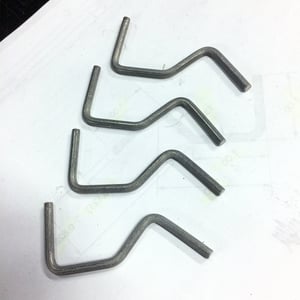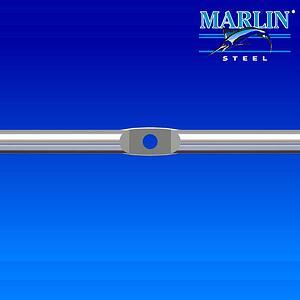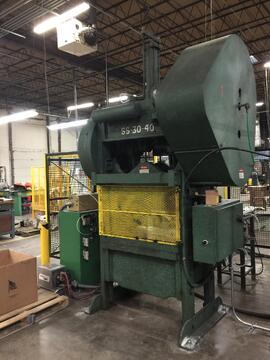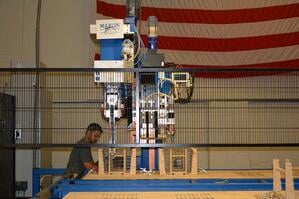 If you are looking to use a wire form product for your materials handling and washing basket needs, it’s only natural to have questions about the wire forming process - whether it’s about the wire forming process in general or specific concerns about a customized product.
If you are looking to use a wire form product for your materials handling and washing basket needs, it’s only natural to have questions about the wire forming process - whether it’s about the wire forming process in general or specific concerns about a customized product.
As a wire forming manufacturer, Marlin Steel is frequently asked a variety of wire forming questions by its customers. Here is a brief guide to the most common questions about wire forming to help you learn more about the process.
Quick Links:
- What Does the Wire Forming Process Consist Of?
- 10 Questions About the Wire Forming Process
- Contact Marlin Steel For All Your Wire Forming Needs
What Does the Wire Forming Process Consist Of?
Wire forming is the process of taking wire, either from a spooled coil or blank length, and bending it into specific forms. Wire forms are extremely flexible, allowing them to be modified into a wide variety of shapes and specific configurations.
Wire forms can be angled, coiled, cut, or bent in all different directions, making them ideal for customized projects. Whether formed into tiny springs for machinery parts to large chains to carry heavy objects, wire forming is useful for multiple applications.
10 Questions About the Wire Forming Process
Here are some of the top questions that Marlin Steel often finds questions about from customers. Find the answers to your top wire forming questions down below:
What's the Biggest Challenge in Making a Wire Form?
 The short answer to this question is: it depends.
The short answer to this question is: it depends.
Every client has unique needs. Because of this, any given customer may need vastly different wire forms for their particular washing and parts handling baskets. From selecting the appropriate grade of steel, welding techniques, coatings, and specific shaping requirements for a given parts washing basket, the permutations for a washing basket’s design can be endless.
In some jobs, getting the bend in the metal just right could be the most difficult aspect of making a wire form, while making the necessary welds might be the hardest thing to do in others.
It could be said that getting the right design for a wire form to meet the needs of a specific process is the most challenging aspect of the process. However, with the right machines and a skilled, well-trained operator who knows how to program them behind the controls, this is a challenge that can be overcome consistently.
For example, piercing steel wire is one of the more difficult operations in wire forming. The process involves creating a small opening in a piece of steel wire so that another object can be run through it. This can be especially seen in steel wire baskets meant to be mounted on a corkboard or peg wall, some of the wires may need to be pierced so that nails, screws, or other fastening devices can be used to attach the basket to the other surface.
Since the steel wire to be pierced is generally very hard and small, it requires great force to penetrate and careful preparation, or else the steel wire can be deformed. Marlin Steel overcomes this wire forming challenge by using a high-tonnage steel press to puncture steel wire without having to heat it up first. The result? A perfectly shaped hole in the metal without the risk of post-punch deformities from the superheating process.
How Much Does Wire Forming Cost?
Wire forming costs depend on the components that go into manufacturing the product and its application. Factors, such as wire materials, labor, volume of wire, use of machines, and shipping costs of formed wire, all contribute to the overall price of wire forming products.
Different types of materials also vary in cost. For example, some materials will be more expensive than others since they can withstand high temperatures. Inconel® is capable of withstanding the most extreme temperatures, but is one of the most costly wire forming materials as a result.
When determining how much your wire forms will cost, it’s important to discuss with an expert. They can help you determine what the best materials are for your product based on its application and environment, and then give you an accurate estimate of the overall cost.
What Kinds of Wire Forming Machines Are Used in the Process?
Marlin Steel set itself apart from the competition by providing “Quality, Engineered Quick®” by using a combination of talented and trained employees and advanced factory automation. Some of the wire forming machines used by Marlin Steels’ degreed engineers include:
Rouselle 8SS40 Double Crank Straight Side Press
 This automated equipment is used to flatten, swage, pierce, and coin stainless steel wires for various applications, including wire forms. For instance, a wire can be flattened to make a weld joint larger, allowing it to easily join two wires securely.
This automated equipment is used to flatten, swage, pierce, and coin stainless steel wires for various applications, including wire forms. For instance, a wire can be flattened to make a weld joint larger, allowing it to easily join two wires securely.
The Rouselle 8SS40 can complete 75 strokes per minute at peak speed - which means Marlin’s production team can manufacture up to 4,500 special wire shapes an hour with this one machine alone. Besides increased efficiency, the side press is capable of producing results more predictable and consistent than by manual labor.
The Ultimat UMW-100
Both a welding and a wire forming machine, the Ultimat UMW-100 quickly assembles custom wire forms straight from the coil. This process is not only fast, but especially efficient; it bypasses any extra processes and handling that would be required for doing the wire bending and welding separately.
Besides being capable of producing wire forms quickly, Marlin Steel frequently uses this welding and wire forming machine to make the larger frame pieces for Marlin’s stainless steel wire baskets and trays. Watch this video on the Ultimat page to witness the machine at work creating both round and rectangular frames for baskets—all within seconds!
The IDEAL MFDC Welder
 For manufacturing complicated final assemblies, Marlin Steel uses the IDEAL welding tool. This welding machine can complete a weld in stainless steel in 2/1,000 of a second. This speed minimizes the chances of spatter, blistering, and other welding deformities caused by excessive heat and weld time.
For manufacturing complicated final assemblies, Marlin Steel uses the IDEAL welding tool. This welding machine can complete a weld in stainless steel in 2/1,000 of a second. This speed minimizes the chances of spatter, blistering, and other welding deformities caused by excessive heat and weld time.
Marlin Steel’s engineering team prefers to use the IDEAL welder to complete custom wire baskets welding instead of the Ultimat wire shaping machine due to its 3D welding capabilities. Since the welding arm can move along the X, Y, and Z axes for full three-dimensional movement, it allows the welder to combine complex shapes independently without operator assistance.
Wire Bending Robotics
Marlin Steel uses a variety of specialized wire bending robots for wire forming capabilities. For instance, some of these wire forming machines are robotic arms that bend one piece of wire one bend at a time. Other wire forming machines, such as CNC press brakes, bend already-welded wires one basket edge at a time to speed up final assembly. Additionally, these wire bending robots can produce wire forming products with consistency and speed unmatched by human labor since they cannot be worn out or tired by repetitive movements.
What Are the Benefits of Using Wire Forming Products?
Choosing the right wire forming products can increase efficiency, decrease costs from damaged equipment, and reduce chances of employee injury.
Increase Efficiency
High-quality wire forming products can provide manufacturing facilities with the right tools to complete operations quickly and efficiently, bolstering productivity.
An example of how expertly crafted wire forming products can effectively increase operational efficiency are the Marlin Steel custom-designed IV poles. Marlin’s degreed engineers crafted these IV poles with additional features for easier facilitation of medical operations. With heavy-duty sheet metal bases with high-quality castors and custom laptop and monitor stands, Marlin Steel IV poles are manufactured to facilitate easy transportation between operations so the IV poles can be wheeled to where they’re needed most as quickly as possible.
Decreased Costs
High-quality wire forms are manufactured to last years of repeated use without risk of breaking. Broken products result in downtime, which can increase costs and damage goods. Not only would you have to wait for a replacement, but your manufacturing downtime could extend for days - impacting your productivity. High-quality products reduce the risk of increased costs due to faulty manufacturing.
Improve Employee Safety
The right wire forming products can help improve employee safety. Cheaper products can break, damage surrounding equipment and injuring employees. By purchasing high-quality wire forming products, you can rely on their structural integrity to withstand released stresses.
Marlin Steel prides itself on providing “Quality, Engineered Quick®” products through automated equipment that can produce results far more regularly and predictable than what could be achieved manually. This results in a structural integrity far more sound than other alternatives.
How Do I Choose the Right Wire Forming Products for My Business?
Choosing custom wire forming products allows degreed engineers to manufacture wire forms to fit your unique specifications. While stock wire forms are mass produced and therefore not constructed to accommodate your specific needs, custom wire forming products can feature designs that are carefully optimized to your applications, such as meeting your parts finishing processes. Custom wire forms can be designed specifically with specialized inserts, wires, or other design features depending on your need.
Additionally, custom wire forms are often built to withstand the stresses of multiple types of parts finishing operations and so offer increased longevity compared to stock wire forms. The right custom wire forms can save your manufacturing business time, money, material, and labor on your production processes when compared to a stock product.
What Is the Hardest Shape to Form?
Generally speaking, the hardest shape to make with consistency is a wire form with a compound bend.
A compound bend is “a feature within the wire form that has two adjacent bends or generation with no straight length tangent to the beginning and end of those radii.” To put in more simplified terms, a compound bend involves making two bends so closely to one another that there is no point at which the wire is perfectly straight in between them.
These kinds of bends are difficult because the wire shaping process is done progressively, with a wire being constantly fed through a machine without stopping. Compound bends are doubly difficult near the start of a length of wire because a portion of straight wire is typically required to begin the shaping process.
In most cases, the length of wire needed to start a bend should be 1 to 1.5 times the width of the wire being shaped. This means that a wire that is 0.2” thick would need 0.2-0.3” of space to begin a bend. The 1.5x rule isn’t always the case, but it is a good general rule of thumb for making wire forms.
It takes a skilled operator who knows the capabilities of the machinery being used to reliably create such difficult shapes.
What Kinds of Materials Should Be Used for Wire Forming Projects?
Many different materials can be used for wire forming projects. The best materials to use will depend on the wire form’s application. With this in mind, here’s a short list of some of the best materials to use for wire forming projects:
Grade 304 Stainless Steel
As an austenitic stainless steel alloy, grade 304 stainless steel boasts incredibly high corrosion resistance and has a higher tensile strength of 621 MPa (90 ksi), making it ideal for handling heavier loads and mild corrosive environments. Grade 304 stainless steel also resists oxidation better than plain steel or iron.
Grade 316 Stainless Steel
Grade 316 SS is a more corrosion-resistant steel than grade 304 stainless steel is. In particular, 316 stainless steel is better at resisting chlorides, such as salt, which makes this stainless steel grade ideal for applications involving caustic environments too hostile for grade 304.
Grade 434 Stainless Steel
A ferritic alloy of stainless steel, Grade 434 stainless steel has exceptional resistance to pitting. Although less chemically resistant than grade 304, grade 434 is still superior at resisting oxidation, corrosion, and pitting than plain steel is.
Polyester TGIC Powder Coat
A specialized coating to protect the actual wire form from exposure to harsh chemicals and high temperatures, polyester TGIC (triglycidyl isocyanurate) is a powder coat that is particularly resistant to abrasions and chlorides.
Niloxy High Solid Coat
Like the polyester TGIC powder coat, niloxy solid coatings are strongly resistant to marring, staining, chipping, humidity, and many solvents to provide excellent protection for metal wire forms.
Plastisol (PVC) Coat
Plastisol is a flexible coating material with properties that can vary based on what plasticizer and processes are used to apply it. It is especially suited for protecting wire forms from chemical exposure.
Inconel®
Inconel® is the brand name of a specially-formulated series of alloys that are specifically made to withstand intense temperatures of up to 1,093.3°C (2,000°F).
Grade 330 Stainless Steel
Another alloy specifically formulated for use in high-temperature applications, grade 330 stainless steel can withstand prolonged exposure to temperatures of up to 1,037°C (1,900°F).
What’s the Difference in Forming Plain Steel and Stainless Steel?
The major difference between wire forming regular steel and stainless steel is that in stainless steel, there are a great many variables that can affect the forming behavior of different grades of stainless steel. These variables include things such as:
- Surface finish.
- Elongation properties.
- Residual drawing compounds.
These are just a few of the factors that can affect the shaping of stainless steel. Of these factors, surface finish is one of the most noticeable differences between shaping stainless steel and ordinary steel.
When forming wire from stainless steel, tool polishing is a critical process in order to make sure that the surface of the steel is free of marks that may be accrued during the shaping of the metal. If this is not done properly, imperfections can be left on the surface of the stainless steel, which can ruin the qualities of the material.
How Has Technology Impacted the Wire Forming Process?
The latest innovations in wire forming manufacturing have been in software, forming head configurations, ease of use and speed with which automated manufacturing machines can shape steel wire.
The improvements in the software and the configuration of the machines now allow manufacturers to make much more than the basic square and circle shapes of yesteryear. Thanks to the increased sophistication of the wire shaping machines of today and the software that is used to run them, much more exotic wire shapes are now possible to meet the needs of every industry, from automobile manufacturing and design to health care applications.
This allows for more custom wire forming designs to be manufactured in less time. Technological advancements in wire form machines allow for even more precise manufacturing at greater speeds - drastically increasing efficiency. As wire forming technology continues to evolve, the more the wire forming process will be fine-tuned for productivity and efficacy.
How Do I Select the Right Wire Form Manufacturers?
The right wire forming manufacturer will be able to deliver your products to you quickly and efficiently - while manufacturing high-quality wire forms. Marlin Steel is able to deliver “Quality, Engineered Quick®” for custom wire forms due to its heavy investment in automated wire forming technologies that allow for quick and consistent bending, welding, and more.
Marlin Steel can manufacture custom wire forming products to meet your specific /MUST%20CREDIT%20WITH%20THE%20FOLLOWING_Photo%20by%20David%20Bohrer%20%20National%20Assoc.%20of%20Manufacturers_DB13875.jpg?width=300&name=MUST%20CREDIT%20WITH%20THE%20FOLLOWING_Photo%20by%20David%20Bohrer%20%20National%20Assoc.%20of%20Manufacturers_DB13875.jpg) requirements. With the wide variety of wire forming machines available, Marlin can complete more custom wire form requests - and provide other manufacturers in the USA with domestically-made and shipped products that eliminate the overseas shipping delays and red tape of using foreign-made ones.
requirements. With the wide variety of wire forming machines available, Marlin can complete more custom wire form requests - and provide other manufacturers in the USA with domestically-made and shipped products that eliminate the overseas shipping delays and red tape of using foreign-made ones.
American-made wire forms deliver numerous benefits. Since American manufacturing is held to a higher quality standard and must follow American safety requirements, manufacturers are more likely to receive safer products that are less likely to break and possibly injury employees. Additionally, American manufacturers like Marlin Steel help support the American economy. By purchasing American-made wire forms, you’re supporting the American manufacturing industry.
Contact Marlin Steel For All Your Wire Forming Needs
This guide to the top wire forming questions should be able to answer your wire-forming questions! If you still need answers, whether about wire forming and wire forming machines in general or what Marlin Steel can do for you, then please contact Marlin Steel today! The expert engineering team would be happy to help.
Or, please reach out about Marlin’s custom wire forms that can be customized for your specific business needs. With trained engineers and the top wire forming machines, Marlin Steel can provide for you for all your wire forming needs!



.gif)


